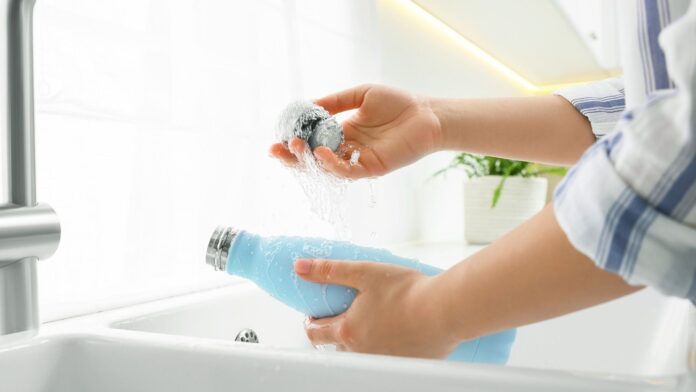Staying hydrated is crucial for health, and ditching single-use plastic bottles is a win for the environment. But those reusable water bottles you love? They can become breeding grounds for germs if not cleaned properly. A recent survey revealed that many people don’s wash them often enough, and this could have consequences for your health.
The Hidden World of Germs in Your Water Bottle
Reusable water bottles provide a perfect environment for bacteria to thrive: moist, enclosed, and warm. Think of the essential ingredients for bacterial growth – moisture, nutrients, and a comfortable temperature – all present within your water bottle. Research confirms that potentially harmful microorganisms, like Staphylococcus aureus and E. coli, can flourish inside, contaminating both the interior and exterior of the bottle. Regular refills without cleaning, particularly in bottles with intricate designs, exacerbate this issue.
How Often Should You Be Cleaning?
While there’s a lack of large-scale studies specifically recommending washing frequencies, experts generally agree on the importance of thorough cleaning. E. coli, for instance, can double in number within just 20 minutes under favorable conditions. Experts recommend cleaning your water bottle after each use, or at least daily, especially if you fill it with anything other than water — juices, coffee, tea, or sports drinks can leave behind sugary residue that feeds bacteria. Adding fruit slices introduces additional bacteria as well.
The Right Way to Sanitize
Whether you opt for a dishwasher or hand-washing, warm water and soap are essential. If washing manually:
- Wash your hands first.
- Disassemble all parts of the bottle.
- Scrub with a cleaning solution and water, using a brush if possible.
- Air-dry the bottle completely between uses.
Dishwashers can be a great help, particularly the sanitizing cycle. However, how the bottle is loaded may affect how well it gets cleaned – wider-mouthed bottles are easier to sanitize.
Potential Health Risks of a Dirty Bottle
Neglecting to clean your water bottle can lead to illness, potentially mimicking food poisoning. While using just water minimizes risk, even water can allow some bacteria to multiply. Signs of contamination often include unpleasant tastes or odors. Mild symptoms could include an upset stomach or allergy-like reactions; more severe contamination might result in diarrhea. People with compromised immune systems are especially vulnerable to serious complications.
Sharing your bottle is another risk factor. Sharing transfers bacteria from your mouth to the bottle, which you then ingest. Experts recommend keeping your water bottle to yourself.
Key Takeaways
- Clean Regularly: Prioritize cleaning your reusable water bottle frequently to prevent germ buildup.
- The Right Method: Warm water and soap, either by hand or in a dishwasher, are your best tools.
- Avoid Sharing: Keep your bottle personal to minimize bacterial transfer.
- Dry Completely: Ensure thorough drying between uses to prevent moisture buildup.
By following these simple steps, you can enjoy the benefits of a reusable water bottle without compromising your health.
Sources:
- Everyday Health Editorial Sources (detailed list provided in original article)
Meet Our Experts:
- Justin Laube, MD
- Cristina Mutchler
